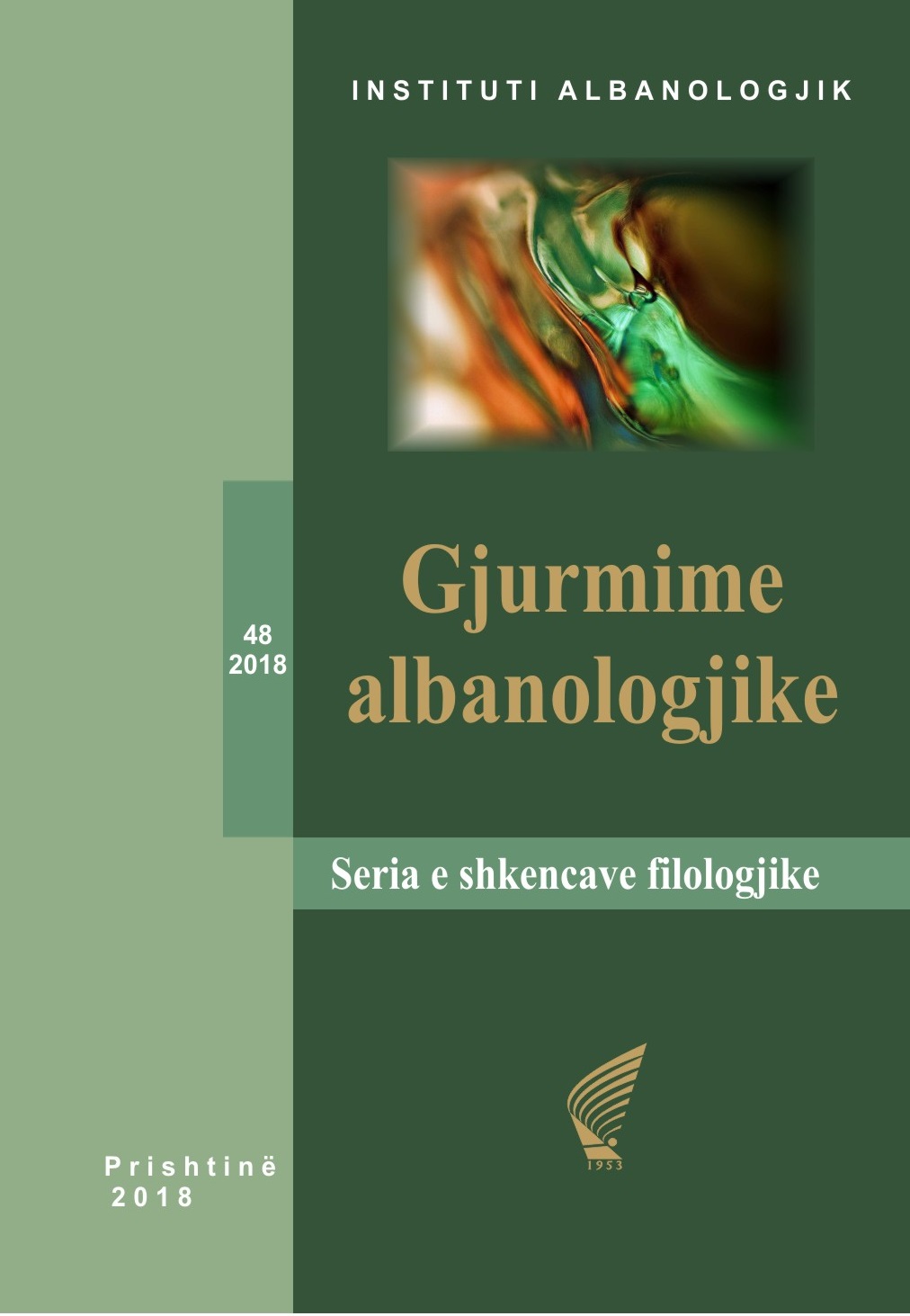VEÇORITË E PËREMRAVE VETORË TË SHQIPES NË VEPRËN ÇETA E PROFETËVE TË PJETËR BOGDANIT
FEATURES OF THE ALBANIAN LANGUAGE PERSONAL PRONOUNS IN THE CUNEUS PROPHETARUM OF PJETËR BOGDANI
Author(s): Shpëtim EleziSubject(s): Language studies, Morphology, Philology
Published by: Instituti Albanologjik i Prishtinës
Keywords: Cuneus Prophetarum; Pjetër Bogdani; morphological features; the personal pronouns; declination; documented Albania;
Summary/Abstract: This paper describes in full the systematic features of the personal pronounced in one of the old Albanian texts of the XVII century, such as the Cuneus Prophetarum of Pjetër Bogdani. Specifically, through the descriptive method, the grammatical features of the personal pronouns of the first two persons, singular and plural, are described: unë, ti, ne, ju, (I, you, we, you) which are also real pronouns in the period of documented Albanian. While the complete paradigm of their declination in this old Albanian text is reflected, cases appearing in Bogdani are also viewed in comparison with the pronoun forms found in forerunning authors, thus proving to give a general picture of their use of Albanian in this period. Thus, the paper deals with a grammatical problem like this of the original pronoun in this old Albanian text from the synchronic perspective. This view of the grammatical categories of pronouns in Bogdani's work is of interest in the field of historical morphology and old texts of the Albanian language. As it can be seen from Table 1, in terms of tonic forms, the first two persons singular and plural do not have a gender marker, as is not shown in the CP any occasion of a locative case or preposition, which is evidenced in the nominal system. The first person of nominative appears regularly in the form unë, unlike the previous authors in whom it comes out the form u. Whereas the personal pronoun of the first person plural appears regularly in the form of na, and the form with metaphony ne is not proved at all in nominative case, which characterizes the whole Albanian of the old authors. Accordingly, the metaphonized form ne is more recent and is created in analogy with the other forms of dative neve, of accusative ne / neve and ablative nesh, which in Bogdani and in other old authors. Also, the tonic form of the two persons plural of accusative it is noteworthy that in addition to the forms ne dhe ju in, which also appear more often as constituent segments prepositional phrase (ndër ne, ndër ju), also appears in the forms neve and juve which certainly appear under the analogical influence of the respective forms of the dative. In general, the declination paradigms of personal pronouns are constructed with the same grammatical tools as in modern Albanian, as with suppletism (unë - mue), with shifts of phonemes (ti – ty, na – ne) and with case endings according to the model of the nominal system (me-je, te-je, ne-ve, ju-ve, ne-sh, ju-sh). With respect to the non-emphasized forms, both dative and accusative cases in singular and plural are testified with same atonic forms, but, as seen above, with the very frequent characteristic of their absence in the position before the verb when after it are the tonic forms (ende mue [më] besoni (I, 16), Krishti e biri [na] âshtë dhanë neve (I, 120), Hyji ynë [na] bekoftë neve (I, 13), Ty [të] përket lavdi Hyj mbë Siont (I, 6), jo së zani tinëzë [ju] kam folë juve (I, 15). This limited use of short forms may have been caused to some extent even under the influence of the Italian language. Another feature that is noteworthy in terms of the non-emphasized forms is that the atonic form of the second person plural of dative and accusative appears in addition to today's form ju, as well as with the form u.
Journal: Gjurmime Albanologjike - Seria e shkencave filologjike
- Issue Year: 2018
- Issue No: 48
- Page Range: 87-103
- Page Count: 17
- Language: Albanian
- Content File-PDF

